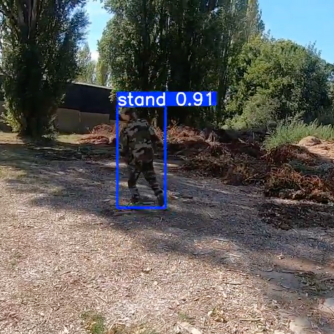How to Build Better Computer Vision Models
Computer vision (CV) is revolutionizing industries such as smart home, security, and defense. From enabling fall detection to powering detection of weapons, CV applications are reshaping the way we interact with technology. However, achieving high-performing CV models remains a challenging task due to the dependency on high-quality, diverse datasets. Explore how synthetic images can address these challenges, transforming the way we train and test CV models.
The Problem: Computer Vision Data Bottlenecks
Building robust CV models starts with acquiring the right data. However, traditional approaches to gathering and labeling real-world data come with significant limitations:
Why Real-World Data Falls Short
- Scarcity of Labeled Data: Specialized domains like medical imaging or defense often lack sufficient labeled datasets. For example, rare diseases or military-specific scenarios are underrepresented in publicly available data.
- Privacy and Ethical Concerns: Collecting and using real-world data often raises privacy issues, especially when dealing with sensitive information like medical records or facial images.
- High Costs and Time Requirements: Manual labeling of datasets is labor-intensive, prone to errors, and expensive. A single large-scale dataset can take months to prepare.
These bottlenecks often hinder the performance of CV models in real-world applications, making synthetic images a compelling alternative.
Synthetic Images: A Major Advance for Computer Vision
Synthetic images are generated images that replicate real-world scenarios. They address the limitations of real-world data while offering unique advantages for CV model training and testing.
How Synthetic Images Are Created
Synthetic images are generated using a variety of techniques, for example Procedural Engine Generation. This technology is leveraging algorithms to produce diverse patterns, textures, and environments with desired objects in the images. It is a best technology to obtain large quantity of images that is bias-free and privacy-safe.

Advantages of Synthetic Data
- Cost Efficiency: Eliminates the need for costly fieldwork and manual labeling.
- Bias Reduction: Enables the generation of diverse datasets, addressing issues like underrepresentation of minority groups.
- Scalability: Synthetic data can be tailored to include edge cases and rare scenarios, ensuring comprehensive training.
- Customizability: Datasets can be fine-tuned to match specific project requirements, such as simulating different weather conditions for autonomous vehicle testing.
Making the Most of Synthetic Images
To fully leverage synthetic data, it’s essential to adopt best practices in dataset creation, enhancement, and testing.
For synthetic images to be effective, they must closely mimic real-world conditions:
- Domain Randomization: Introduce variations in lighting, textures, and object positions to make models more robust to real-world variations.
- Style Transfer: Apply textures and styles from real-world data to synthetic images, ensuring authenticity and visual coherence.
While synthetic images excel in creating controlled environments for rigorous model training. They can simulate challenging conditions, such as detecting objects in low-light environments or identifying threats in buildings or cities.
Real-World Applications of Synthetic Data
Synthetic images are already driving innovation across multiple industries:
- Autonomous Driving: Training vehicle detection models to recognize pedestrians, road signs, and obstacles in diverse weather and lighting conditions.
- Healthcare: Generating synthetic images to rapidly detect patients or elderly that have fallen.
- Smart City: Enhancing weapon detection for a safer cities and public areas.
- Defense: Creating datasets for surveillance in scenarios where real-world data is unavailable or classified.
It is estimated that by simulating blizzards and heavy rain, the surveillance company can reduce model failure rates by 30% in adverse conditions.

Staying Ahead: Best Practices
The adoption of synthetic data is growing rapidly, driven by advancements in computer vision, simulation technologies, and the scarcity of real-world data. Transparency and adherence to ethical guidelines are becoming increasingly important as synthetic data usage expands. Additionally, companies offering synthetic data are emerging as a powerful resource, providing ready-made datasets that lower the barrier for smaller companies to implement advanced AI solutions. Staying informed about these trends can help organizations remain competitive in a rapidly evolving landscape.
For organizations new to synthetic data, a step-by-step approach is key:
- Start Small: Begin with pilot projects that integrate synthetic and real-world data.
- Focus on Quality: Prioritize realistic and diverse synthetic images over sheer quantity.
- Iterate Continuously: Regularly validate and update your models using both synthetic and real-world test sets.
Wrapping Up
Synthetic images are redefining the possibilities for computer vision. By addressing traditional data bottlenecks, reducing costs, and enhancing model performance, synthetic data offers a scalable and customizable solution for the next generation of AI systems. Whether you’re working on autonomous vehicles, or advanced surveillance systems, synthetic data can be the catalyst that takes your CV models to new heights.
The future of computer vision is synthetic—and it’s ready to unlock unparalleled opportunities for innovation and growth.



